スキーツーリングやバックカントリースキーのような人力スキーが冬のスポーツを席巻しています。チェアリフトに頼る代わりに、自分の力で山を登り、手つかずのパウダーを楽しみ、フィットネスを維持しています。これが急成長している理由です:
- 人気急上昇:オーストリアでは2019年から2022年にかけてツーリングスキーの販売が30%増加。アメリカでは、10年前の33%から現在は65%のスキーリゾートが登りスキーを許可しています。
- 成長の理由:パンデミックで人々が屋外に出るようになり、ツーリングは混雑が少なく、リゾートより環境に優しく、運動感覚を感じさせない素晴らしいトレーニングを提供します。
- ギア革命:SnowfeetのWALKSKI ショートスキー(長さわずか100cm、重さ2.79ポンド)は、ツーリングをより簡単で手頃な価格にしています。価格は399ドルからで、従来のセットアップの2,200ドルと比べてお得です。
- エコフレンドリーな選択:リフトなし、スノーマシンなし、自然への影響も少ない。さらに、長いリゾートの列に並ぶ必要もありません。
- 安全第一:雪崩用具、適切なレイヤリング、ナビゲーション機器は必須です。バックカントリーの冒険者には雪崩講習が重要です。
スキーツーリングは単なるスポーツ以上のものです。トレーニングであり、一人でも仲間とでも楽しめる冒険であり、自分のペースで山を探検する方法です。パウダーを追いかけるにせよ、静かな体験を求めるにせよ、リフト券を捨ててスキントラックを歩く時が来ました。
スキーガイドが語るバックカントリースキーの始め方!
スキーツーリングのメリット:フィットネス、自由、そしてエコフレンドリーな選択肢
スキーツーリングは単なる斜面の楽しみ方ではなく、リゾートスキーを超えた全く新しい体験です。トレーニングであり、冒険であり、地球に優しい歩き方をするチャンスが一つに詰まっています。
自然の中での全身トレーニング
フィットネスに関して言えば、スキーツーリングは他に類を見ないほど優れています。リゾートスキーのようにチェアリフトが登りを助けてくれるのとは違い、ツーリングは自分の力で山を登る必要があります。つまり、脚と体幹がフル稼働し、同時に本格的な有酸素運動と筋力トレーニングができるのです。さらに、登りと下りの組み合わせが異なる筋肉群を刺激し、全体的なパフォーマンスを向上させます。
そしてカロリー消費は?驚くべきものです。従来のスキーやスノーボードは1時間あたり約300〜500カロリーを消費しますが、ツーリングはそれを上回ります。実際、クロスカントリースキーや室内サイクリングの1時間分のエネルギー消費に匹敵するには、ダウンヒルスキーで約2.5時間かかります。
しかしここがポイントです:運動している感じがしないのです。登録看護師でスキーパトロールのジョシュア・コーエンが言うように:
「これは運動している感じがしない運動です。山の新鮮な空気を楽しみながら外にいるとき、『健康を維持するために運動しなければ』とは思いません。ただ楽しんでいるだけで、そのおかげでトレーニングがずっと楽しくなります。」
スキーは特に高齢者にとって長期的な健康効果ももたらします。60歳から76歳の個人を対象とした研究では、12週間のスキーでバランス、持久力、筋力、パワーが向上したことがわかりました。これは活動的でいるための素晴らしい方法であり、心血管疾患や高血圧などのリスクを減らします。
混雑を避けて人里離れたエリアを探検しよう
混雑したリフトの列や賑やかなコースにうんざりしているなら、スキーツーリングは自由への切符です。リゾートを越え、手つかずの自然へとあなたを連れて行き、多くのスキーヤーが夢にも見ない地形へのアクセスを提供します。
孤独感だけでも価値があります。リゾートの喧騒から離れた広大で静かな風景を滑ることを想像してみてください。そして新雪に最初のトラックをつけることほど素晴らしいものはありません。日本の一部の地域のように、年間で最大1,000インチの雪が降る場所もあり、未踏の滑走の無限の機会を生み出しています。
スキーツーリングへのアプローチは地域によって異なります。IFMGAガイドのエリック・ラーソンによると:
「多くのヨーロッパ人は運動や体を動かすためにスキーツーリングを始めます。これは彼らの文化に深く根付いています…多くの人はその努力によって得られる景色や、山を旅する純粋な喜びを求めています。」
北米では、パウダーを探し、孤独を楽しみ、新しい地形を探検することに焦点が当たることが多いです。いずれにせよ、ツーリングは山とのより深い繋がりを提供し、整備されたコースでは到底到達できない場所へ連れて行ってくれます。氷河地形をナビゲートしたり、景色を堪能したり、その体験は挑戦的であると同時に非常に充実しています。
リゾートスキーに代わるエコフレンドリーな選択肢
スキーツーリングは単なる個人的な逃避ではなく、より環境に優しい選択でもあります。従来のリゾートスキーは大きな環境負荷を伴います。例えばスキーリフトは電動モーターに依存しており、多くはディーゼルエンジンで補助されていて、かなりのエネルギーを消費します。リフトの代わりに自分の足を使うことで、このエネルギー消費を完全にカットできます。
サステナビリティの専門家、アリス・リナリとロレンツォ・アレジが説明します:
"電力の供給源が持続可能でないなら、代わりにスキーツーリングに行きましょう。それは自然と本当に繋がる最高の方法でもあります。"
リゾートへの移動も大きな炭素排出源で、全体の57%を占めています。地元のツーリングスポットを選んだり、環境に優しい交通手段を利用することで大きな違いが生まれます。例えば、冬に毎年9年間電車でスキー場に行くことは、1回の飛行機利用よりも低い炭素フットプリントになります。
ツーリングは自然の生息地の保護にも役立ちます。整備されたコースや造雪機、恒久的な施設が不要なため、環境への影響が格段に少なくなります。山を楽しみながら、できるだけ手つかずのままにしておく方法です。
Snowfeet*:短いスキーでスキーツーリングを変革する
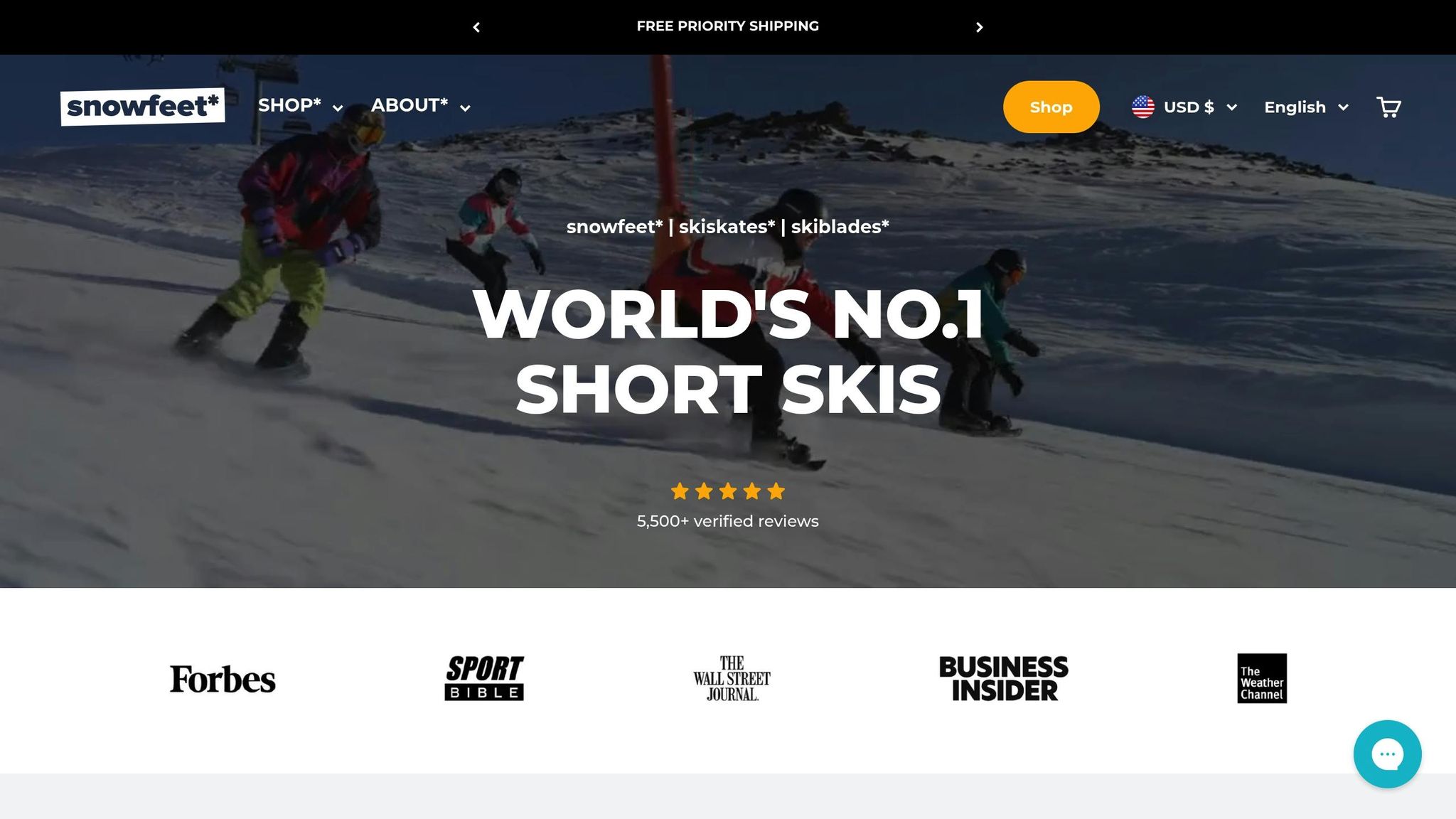
スキーツーリングは伝統的に重くて扱いにくいギアと結びついてきました。しかし、Snowfeet*はコンパクトな短いスキー技術でその常識を覆しています。この新しいスキーツーリングのアプローチは、小さく軽いデザインがコントロール性と利便性の両方を高めることを証明しています。これはバックカントリーの冒険をより多くの人にとってアクセスしやすく、楽しいものにする一歩です。
Snowfeet*製品の特長は?
Snowfeet* WALKSKI バックカントリーツーリングスキーはゲームチェンジャーです。これらのスキーは長さ100cmで、バインディング込みでわずか2.79ポンド(約1.27kg)の軽さです。そのサイズにもかかわらず、従来のバックカントリースキーの性能を備え、比類なき携帯性と使いやすさを提供します。かさばるオプションとは異なり、WALKSKIはバックパックにすっきり収まり、長いトレッキングでの不必要な疲労を防ぎます。さらに、その反応性の高いデザインで操作も簡単です。
なぜ短いスキーがツーリングに最適なのか
Snowfeet*は、長いスキーが常に優れているという考えを覆しています。短いスキーはコントロール性が向上し、習得も簡単で、初心者から熟練者まで幅広くおすすめできる選択肢です。
"長いスキーと比べて、短いスキーは簡単です:軽くて持ち運びやすく、習得もしやすいです。" – Snowfeet Team
理由はこれです:短いスキーは重心を安定させることでバランスを保ちやすく、特に難しい地形で効果的です。また、少ない力で済むため、過酷な登り坂でも疲労が軽減されます。初心者にとっては、技術に苦労する時間が減り、ゲレンデを楽しむ時間が増えます。経験豊富なスキーヤーも、特に狭いトレイルや予測できない雪の状態で、このスキーの機敏さと精度から恩恵を受けます。スキーツーリングをより身近にすることで、Snowfeet*はより多くの人にバックカントリー体験の扉を開いています。
あらゆる地形でのパフォーマンス
どんなツーリングギアも異なる条件での性能が究極の試練ですが、WALKSKIは期待を裏切りません。新雪を切り裂き、圧雪されたトレイルを攻略し、整備されたゲレンデを滑走するどんな場面でも信頼できるパフォーマンスを発揮します。短い長さにより、伝統的なロングスキーと比べて狭いスペースや急な方向転換がずっとスムーズに行えます。
この適応性により、険しいバックカントリーの道を自信を持って探検したり、手つかずのゲレンデで一日を楽しんだりすることができます。価格帯は$399から$490で、WALKSKIは高度なスキーツーリングに手頃に挑戦できる方法を提供します。携帯性、操作性、手頃な価格の組み合わせが標準的なギアと差別化し、バックカントリー体験をアップグレードしたい人にとって強力な選択肢となっています。
Snowfeet* と標準的なスキー・スノーボードブランドの比較
スキーツーリングにおいて、選ぶギアが体験を左右します。Rossignol、K2、Burtonのような伝統的なブランドは、長くて重いデザインに頼ってきました。しかし、Snowfeet*はその常識を覆し、小さくて軽いギアがバックカントリーの冒険を変えることを証明しています。コンパクトなアプローチで、Snowfeet*は現代のスキーツーリングに新しい視点をもたらしています。
主要な特徴の比較
こちらは、Snowfeet* ショートスキーが伝統的なロングスキーや標準スノーボードとどのように比較されるかを並べてご覧いただけます:
| 特徴 | Snowfeet* ショートスキー | 伝統的なロングスキー | 標準スノーボード |
|---|---|---|---|
| 長さの範囲 | 38~120 cm | 170 cm以上 | 140~170 cm |
| 重量 | スキーあたり2.79ポンド(WALKSKI) | スキーあたり8~12ポンド | ボードあたり6~10ポンド |
| 携帯性 | バックパックに収まる | スキーバッグ/ルーフラックが必要 | ボードバッグ/ルーフラックが必要 |
| ブーツの互換性 | どんな冬用シューズでも | スキーブーツのみ | スノーボードブーツのみ |
| 習得の難易度 | 初心者に優しい | 上級スキルが必要 | 中級から上級 |
| 操作性 | 非常に操作しやすい | 狭い場所では難しい | 狭い地形では制限される |
| 価格帯 | $150–$690 | $400–$1,200+ | $300–$800+ |
なぜ Snowfeet* が際立つのか
Snowfeet*短いスキーは、伝統的な装備では実現できないバックカントリースキーの多くの利点をもたらします:
1. 超ポータブルで使いやすい
かさばるスキーバッグを持ち運んだり、車の屋根に装備を固定したりする必要はありません。Snowfeet*短いスキーはバックパックに収まるほど小さく、普段の冬用シューズで使えます。これにより、手間を減らし自由にゲレンデを楽しめます。
2. 長持ちする設計
ガラス繊維強化素材で作られ、金属製のスキーエッジを備えたSnowfeet*短いスキーは、過酷な条件に耐えるよう設計されています。岩だらけのトレイルや密集した木々の間を縫うように進む際も、この装備は伝統的なスキーが苦戦する場所でしっかりと機能します。
3. 初心者に優しい
伝統的なスキーが高度な技術を必要とするのに対し、Snowfeet*短いスキーはより緩やかな学習曲線で設計されています。これにより、初心者でも圧倒されることなくバックカントリーの地形を探検できます。
4. 予算に優しい
わずか150ドルから始まるSnowfeet*短いスキーは、1,000ドルを超えることもある伝統的なセットアップよりも手頃な代替品です。その余剰資金は安全装備、ガイド付きツアー、さらには山への追加の旅に使えます。
sbb-itb-17ade95
ツーリングのための装備と安全要件
バックカントリースキーツーリングは冒険だけでなく、準備が重要です。天候は急変し、助けがすぐ近くにいるとは限りません。だからこそ、適切な装備と安全知識が不可欠です。
必須のツーリング装備
雪崩安全ツール
バックカントリーでの雪崩安全装備は命綱です。すべての旅にはビーコン(トランシーバー)、ショベル、プローブが必須です。[2025]年の注目すべき雪崩安全キットは次の通りです:
- Mammut Barryvox Package Pro Light:540ドルの価格で、Barryvoxトランシーバー、Alugator Pro Lightショベル、280 Speed Lockプローブがセットになっています。重さはわずか2.45ポンドです。
- Black Diamond Alpine Avalanche Safety Package:こちらも540ドルで、Recon LTビーコン、Quickdraw Carbon 240プローブ、Transfer LTショベルが含まれ、総重量は1.73ポンドと軽量です。
どちらのオプションもコンパクトで信頼性が高く、助けが遠い場所でも安心感を提供します。
ツーリングスキーと装備
荷物を軽くしたいなら、Snowfeet* WALKSKI バックカントリー ツーリングスキーはゲームチェンジャーです。1本あたりわずか2.79ポンド(100cmの長さ)で、通常8〜12ポンドの伝統的なツーリングスキーの約3分の1の重さです。これにより長時間のツアーでも疲労が軽減され、全体的に安全性が向上します。さらに、これらのスキーは標準の冬用ブーツ、スキーブーツ、スノーボードブーツに対応しているため、高価なツーリングブーツ(通常400〜800ドル)を買う必要がありません。平均的な2,200ドルの伝統的なツーリングセットと比べて、WALKSKIシステムはわずか499ドルで、1,700ドルを安全講習やその他の必需品に投資できます。
服装とレイヤリング
バックカントリーツーリングは絶え間ない気温変化に対応する必要があります。しっかりしたレイヤリングシステムが鍵です。吸湿速乾のベースレイヤーから始め、保温性のあるミッドレイヤーを重ね、防水のアウターシェルで仕上げましょう。手袋、帽子、顔の保護具などの予備も忘れずに。小さなアイテムですが、状況が変わると大きな違いを生みます。
ナビゲーションと緊急装備
ナビゲーションツールは必須です。地形図、コンパス、オフライン地図対応のGPS機器やスマートフォンを持参しましょう。以下のような緊急用品もケチらないでください:
- 応急処置キット
- 装備の修理用工具
- 予備の電池付きヘッドランプ
- 緊急用シェルター
予備の食料と水を持参し、Backcountry SOSアプリのダウンロードも検討しましょう。このアプリは、携帯電波の届きにくい場所でも緊急サービスに位置情報を送信できます。
「スキーツーリング装備の選択は圧倒されることもありますが、自分に最適な装備を見つけるために時間をかけることが重要です。」– ニコール・サムソン=カップ、バックカントリースペシャリスト
バックカントリーでの安全確保
雪崩教育:必須
雪崩装備を持っているだけでは不十分です。使い方を知る必要があります。American Institute for Avalanche Research and Education(AIARE)が提供する認定雪崩安全コースを受講しましょう。レベル1のコースでは地形の読み方、雪の状態の評価、賢明な判断の仕方を学べます。そして学ぶだけでなく、ビーコン、ショベル、プローブを使って定期的に練習してください。緊急時のスピードと自信が命を救います。
ルート計画と天候の把握
出発前に、地元の雪崩予報を確認しましょう。Colorado Avalanche Information Center、Northwest Avalanche Center、Sierra Avalanche Centerなどのウェブサイトは、詳細な毎日の更新情報を提供しています。グループのスキルレベルと現在の状況に合ったルートを選びましょう。必ず誰かに行程と予想帰着時間を知らせてください。そして、山の天気は急変します。晴天が数時間でホワイトアウトに変わることもあります。必要に応じて計画を変更したり引き返す準備をしておきましょう。
グループの安全とコミュニケーション
ツアーは3~4人のグループで行うと安全で、より楽しいです。グループ体制は、より良い意思決定と緊急時の迅速な対応を可能にします。リーダーを決め、明確なコミュニケーションプロトコルを設定し、一緒に救助シナリオを練習しましょう。チームとしての連携方法を知っていることが、いざという時に大きな違いを生みます。
結論:なぜツーリングがスキーの次なる大きなトレンドなのか
スキーツーリングは一過性の流行ではなく、冬のスポーツとの関わり方を変えています。パンデミック中にバックカントリースキーの人気が急増し、リゾートが完全に再開してもその関心は衰えていません。実際、近年のスキーヤー訪問者数の記録的な増加がこの変化を裏付けています。
ツーリングの魅力は何でしょう?まず、手つかずの雪を自由に探検できること、全身を使ったワークアウト、そしてリゾートスキーより環境に優しい選択肢であることです。さらに、リモートワークの普及と山に近い場所への移住により、週末だけのカジュアルスキーヤーが日常的な冒険者へと変わりつつあります。ある専門家はこう言いました。「多くの人にとって、スキーは単なる趣味以上のもの、それはライフスタイルです」。
ギアの進化により、ツーリングはこれまでになく手軽になっています。従来の装備はかさばり高価でしたが、Snowfeet*は軽量で手頃なデザインでゲームチェンジャーとなっています。5,500件以上の検証済みレビューと平均4.9/5の高評価を誇り、Snowfeet*はそのシンプルさと性能でファンを獲得しています。従来の専用ブーツを必要とするセットアップとは異なり、Snowfeet*はすでに持っている冬用の靴で使えます。つまり、ハイキングトレイルからスキーゲレンデへ、バックパックに収まるギアで移動でき、簡単な習得曲線のおかげで一度の体験で自信が持てます。
安全性も大きな利点です。軽量ギアはパフォーマンスを向上させるだけでなく、疲労を軽減し、バックカントリーでの活動において非常に重要です。
このスキーツーリング用具の変革は、より多くの人々にスポーツを開放し、今日求められる意味のあるエコ意識の高い冒険と調和しています。スキー初心者でも経験豊富なプロでも、新しい挑戦を求めるなら、Snowfeet*のような革新が山の呼び声に応えるのをこれまで以上に簡単にしています。
リフト券がなくても大丈夫。ゲレンデはあなたを待っています。今や誰でも答えられます。
よくある質問
なぜスキーツーリングは従来のリゾートスキーより優れた選択肢なのでしょうか?
スキーツーリングは、従来のリゾートスキーに代わるスリリングで充実した選択肢を提供します。賑やかなゲレンデを離れ、手つかずの山岳地帯へ冒険に出るチャンスです。人里離れた静かで美しい自然の中には特別な何かがあり、それは自由の感覚と自然との深い繋がりをもたらします。
でも、景色だけがすべてではありません。スキーツーリングは全身を使った素晴らしいワークアウトでもあります。スキーリフトの助けなしに、自分の力で登ることでフィットネスレベルが一段と上がります。そして正直に言えば、頂上にたどり着き、その滑走のすべてを自分の力で成し遂げたと実感する瞬間ほど最高の気分はありません。さらに、環境に優しい冬のスポーツの楽しみ方であり、Snowfeetの「スキーを誰でも楽しめるようにしながら地球に優しく」というミッションに完璧に合致しています。
SnowfeetのWALKSKI Backcountry Touring Skis (100 cm)はスキーツーリングのゲームチェンジャーです。コンパクトで軽量、操作も簡単で、あらゆるレベルのスキーヤーに最適。冒険を追い求める人も、フィットネスを目指す人も、ただ自然を満喫したい人も、Snowfeetはスキーツーリングをこれまで以上に楽しく、アクセスしやすくします。
Snowfeetの短いスキーはどのようにスキーツーリングをより楽しく、アクセスしやすくしているの?
Snowfeetの短いスキーは、スキーツーリングに新しい感覚をもたらし、機敏さと使いやすさを兼ね備えています。コンパクトで軽量なため持ち運びが楽で、トレイルでの疲労も軽減。さらに、狭いトレイルや難しいバックカントリールートでのタイトなターンも楽々こなせます。難しい地形が一気に楽しくなります。
従来の長いスキーとは異なり、Snowfeetの短いスキーはコントロール性が高く、操作が簡単です。初心者が基本を学ぶのにも、経験者が新しい楽しみ方を探すのにも、このスキーはゲームチェンジャーです。Snowfeetと共に、スキーツーリングはより簡単で、誰にとってもワクワクする冒険になります。
スキーツーリングを始める前に知っておくべきギアと安全のポイントは?
スキーツーリングの始め方
スキーツーリングに挑戦するなら、適切なギアが必須です。まずは_Snowfeet WALKSKI Backcountry Touring Skis (100 cm)_*のような軽量スキーから始めましょう。ビンディング、ブーツ、クライミングスキン、そして必須の雪崩安全装備(トランシーバー、シャベル、プローブ)と組み合わせてください。Snowfeet*スキーが際立つ理由は?その軽量でコンパクトなデザインです。従来のスキーやスノーボードのようにかさばらず、持ち運びや操作が簡単で、冒険がより楽しくなります。
安全は常に最優先です。雪崩の知識を身につけ、出発前に雪と天気の状況を確認し、安全装備を忘れずに持って行きましょう。Snowfeet*製品は初心者から熟練の探検家まで、バックカントリーをよりシンプルでフィットネス志向に楽しめる素晴らしい選択肢です。さらに、その軽量設計により、重い装備を持ち運ぶことなくアウトドアのスリルを満喫できます。














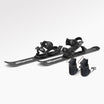






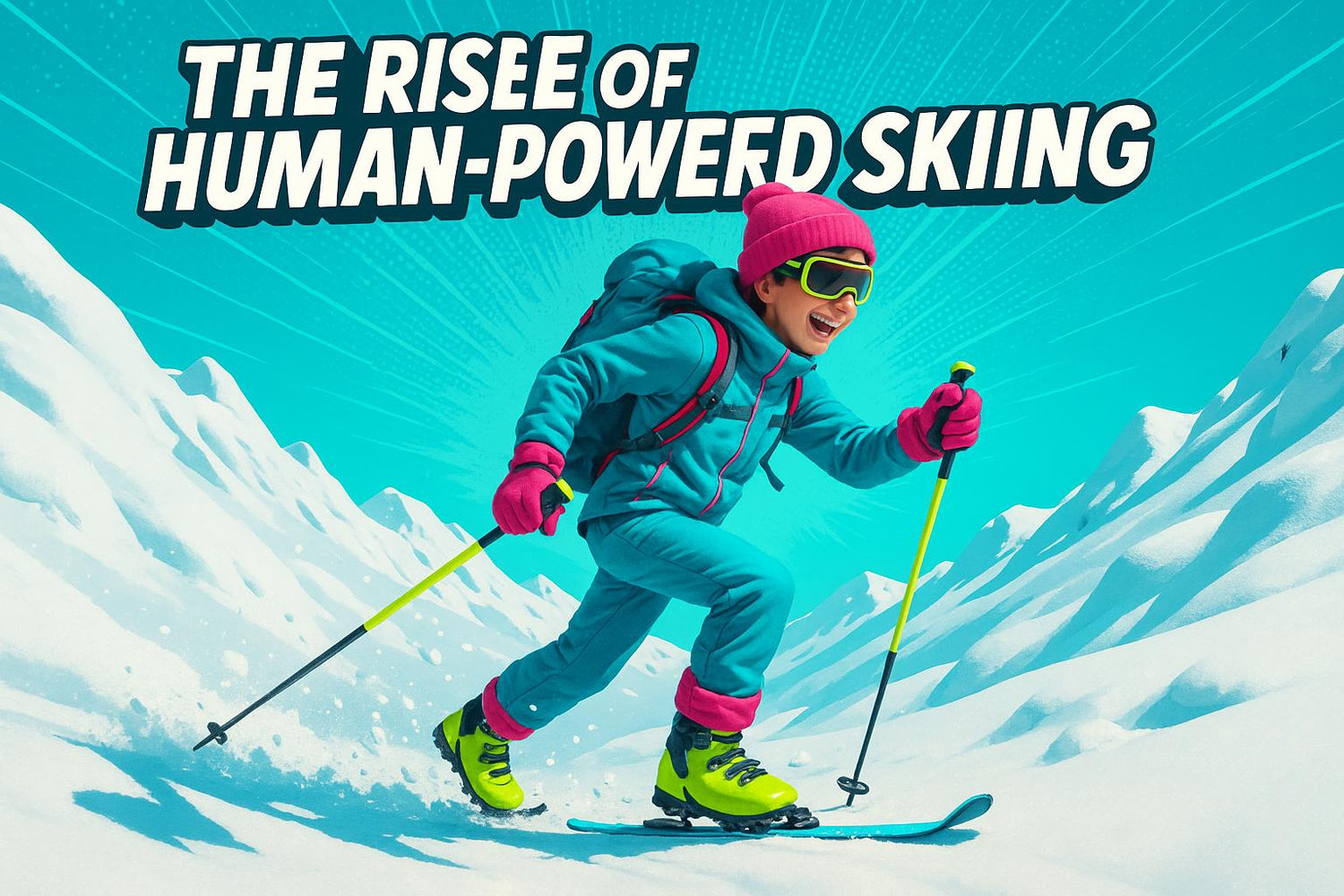
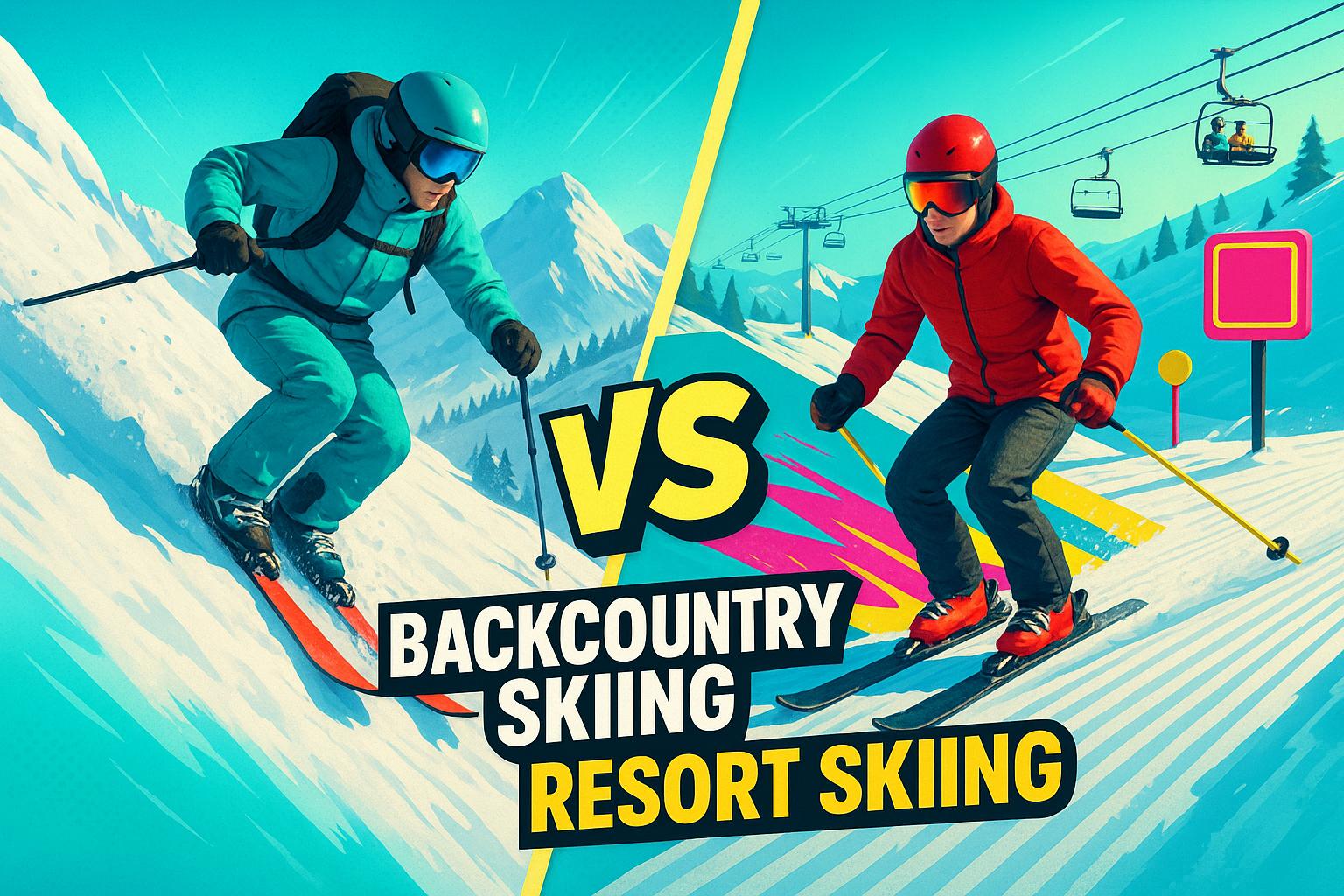
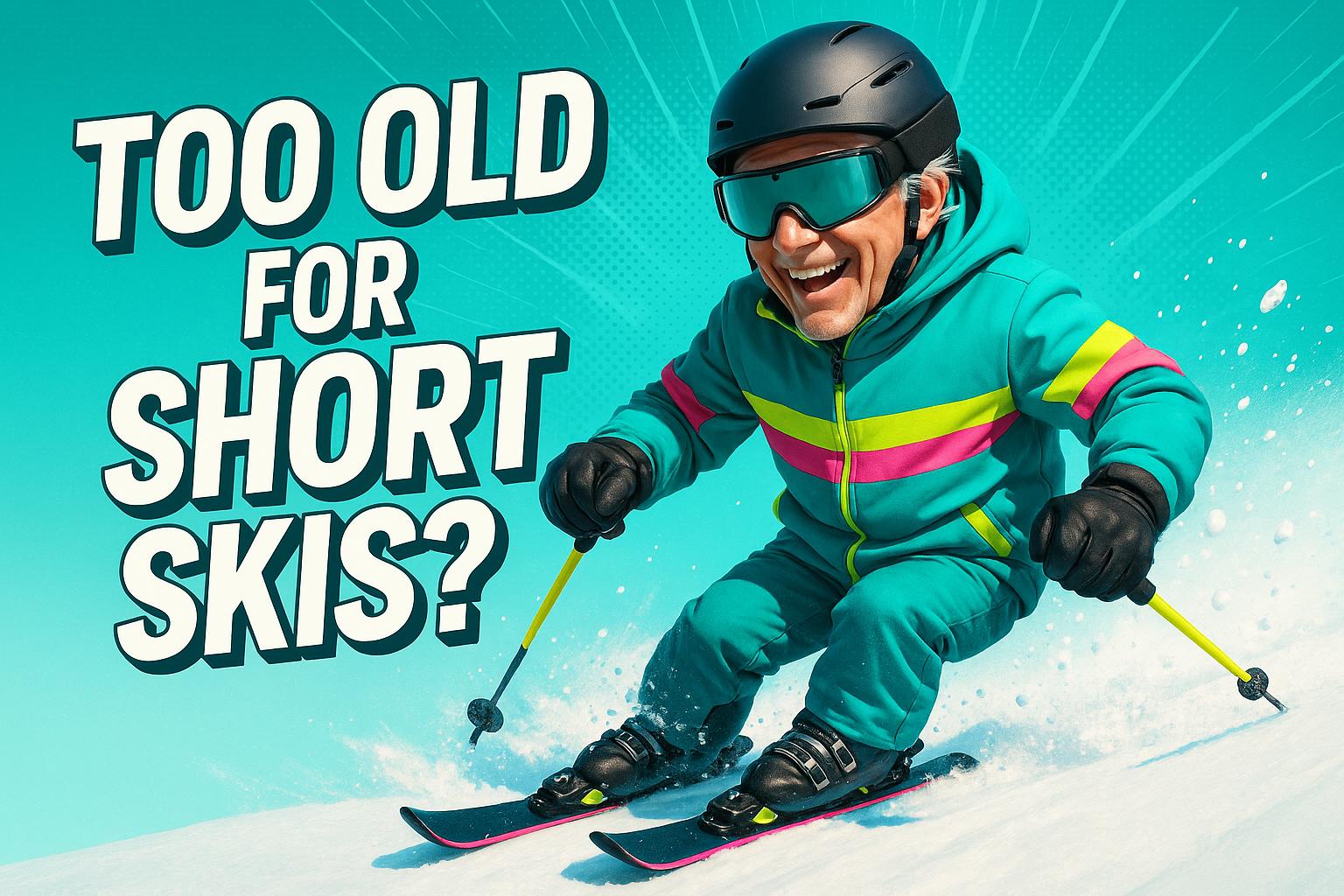







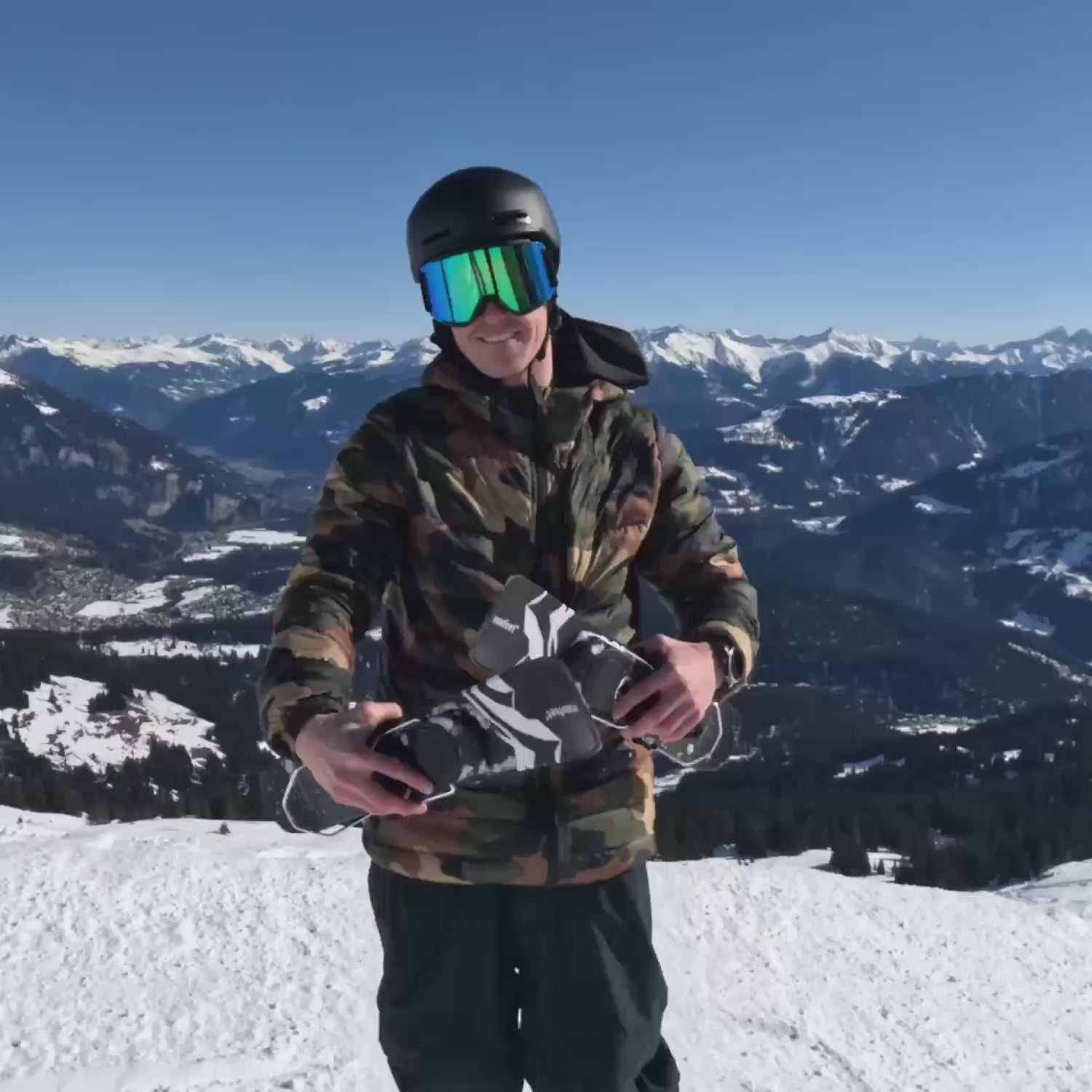

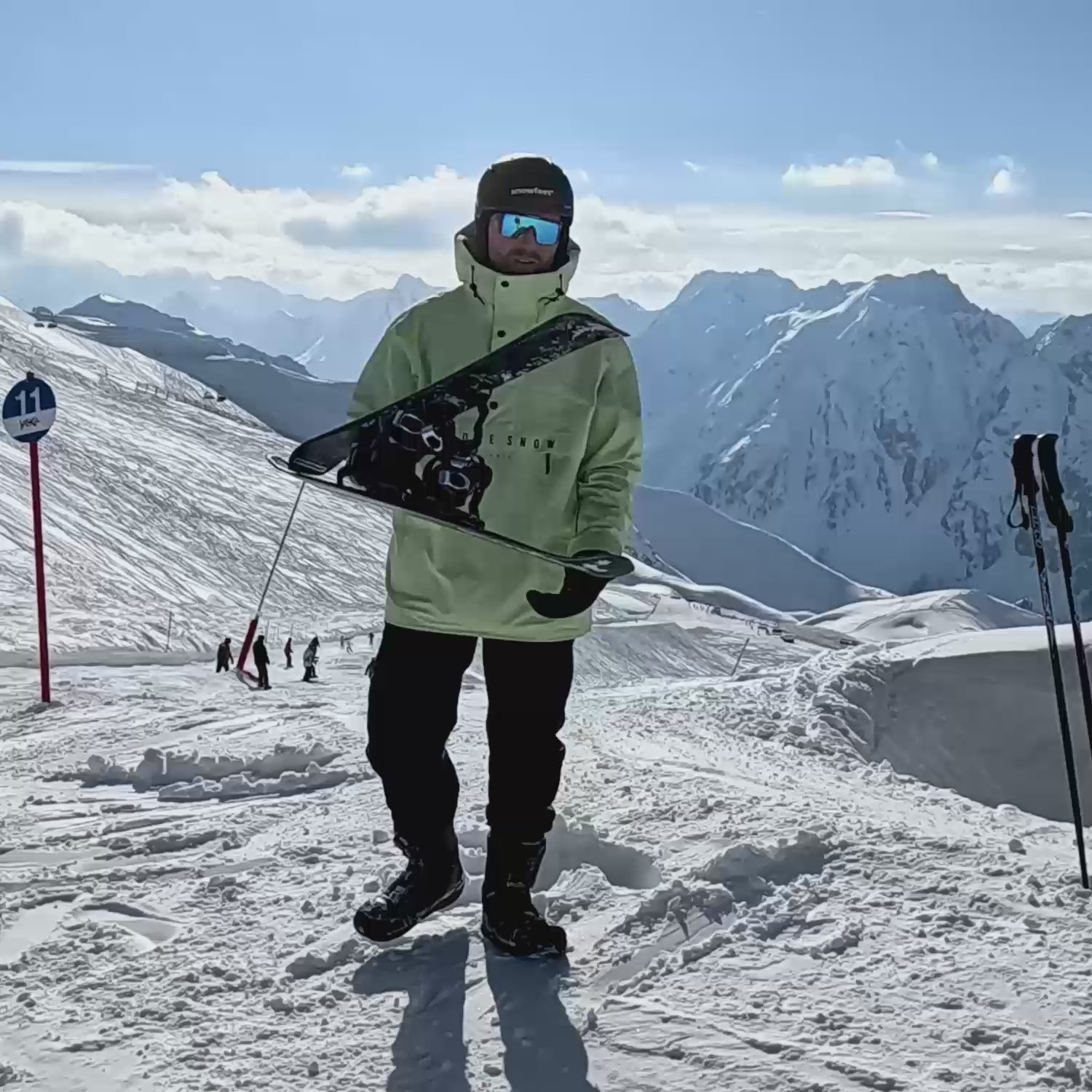
コメントを残す
このサイトはhCaptchaによって保護されており、hCaptchaプライバシーポリシーおよび利用規約が適用されます。